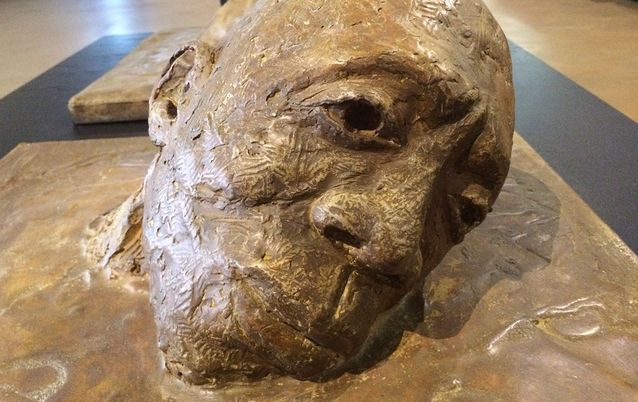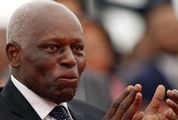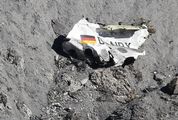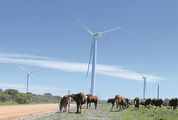HALF ART: Artists take long, hard look at realities of modern life
by Chris Thurman,
2016-03-11 05:50:23.0
AT THE far end of the University of Johannesburg Gallery, where the finalists of the PPC Imaginarium Awards for 2015 are being exhibited, stands a disturbing figure. Gaunt, stooping forward, missing chunks of his head and body, he reaches out towards an empty frame hanging on the wall. Dramatic backlighting enhances his spectral presence.
The sculpture Only Eye Can See by Mziwoxolo Makalima, is presented in the accompanying text as a depiction of the pressure faced by an artist whose relatives do not appreciate his vocation. Thus, we read, "the figure in this installation is blind to the beauty of the artwork before him".
Yet, if the figure represents a family — a community, a society, a nation — that does not support artists, he also paradoxically stands in for the artist himself, following a vision that is his alone. "I have chosen to be like concrete that gets stronger as it weathers," writes Makalima.
"Only I can see where I want to be."
His work encapsulates the dynamics of this exhibition, in which cement features as the dominant material. PPC’s Imaginarium Awards are aimed at "young" and "emerging" artists, and while there are a few older and more established artists among the finalists, there is something decidedly youthful about much of the art on display: a combination of innovation and naivety. Sometimes this is evident in the work itself; sometimes it emerges in the artists’ statements.
Chantelle Chambers’ rhino-human hybrid "zef" sculpture, we are told, "is saying that it is okay to let the inner monster out", exposing "the ugliness of oneself with a sense of pride". This may not be sophisticated phrasing, but the combination of vulnerability and strength to which Chambers refers says something about the courage required to be an artist, particularly when this entails presenting oneself honestly and earnestly for public appraisal.
Marina Walsh’s beggar — a human form in the foetal position lying under a blanket of beads — evokes a strong sense of pathos that is somewhat undermined by what seems an almost callous approach to her subject.
"I am intrigued by the amorphous shapes that homeless people make ... when lying on pavements," she tells us, and her sculpture is "an actual portrait of a familiar beggar, whom I pass every day, yet whose name I don’t know."
It’s easy enough for people like me to criticise Walsh’s apparent indifference to this anonymous individual; but then again, how many homeless people do I stop to speak to? And the end result of Walsh’s observation and recreation is what she calls "a monument" — the artwork itself constitutes a challenge to the viewer, foregrounding the plight of people who so often fade into the background of public life.
A number of the works are more conscious and careful in their activism. Thamsanqa Tonga’s sculptural installation explores the phenomenon of migrant labour.
In the Industrial Design category, Ivan Brown’s concrete beehive proposes a solution to the bee crisis resulting from bacterial disease.
In the Film category, Heidi Salzwedel and Charl du Preez’s "Equivalence" uses two lifelike concrete statues to great effect in demonstrating SA’s twin worlds of affluence and poverty.
In the Fashion category, Mieke Vermeulen pays tribute to the more than 1,100 garment factory workers who were killed in the Rana Plaza collapse in Bangladesh in 2013, and reminds us that while many textile labourers remain exploited, "we are still buying".
This is a welcome critique of the fashion industry, and one that is facilitated by the unusual combination of cement-as-clothing. Indeed, the novelty of concrete as a medium forces the entrants to reflect on both the symbolic and the practical uses of the substance.
Some of these associations are embarrassing, like an assertion of the "masculine characteristics of sturdiness and dependability".
Negative connotations also emerge: concrete is associated with urban monotony, only to be interrupted by the persistence of nature. To PPC’s credit, many of the artists’ statements about concrete are nuanced, such as Kyle Goulden’s comparison between the "rigid thinking" of extremism (which is "solid" but "brittle") and the strength of cohesive societies, which, as in the mixing of concrete, lies in the "breaking apart and reforming of elements".

Nkhensani Rihlampfu, "The vanity of human wisdom" (Sculpture - detail). Picture: CHRIS THURMAN
AT THE far end of the University of Johannesburg Gallery, where the finalists of the PPC Imaginarium Awards for 2015 are being exhibited, stands a disturbing figure. Gaunt, stooping forward, missing chunks of his head and body, he reaches out towards an empty frame hanging on the wall. Dramatic backlighting enhances his spectral presence.
The sculpture Only Eye Can See by Mziwoxolo Makalima, is presented in the accompanying text as a depiction of the pressure faced by an artist whose relatives do not appreciate his vocation. Thus, we read, "the figure in this installation is blind to the beauty of the artwork before him".
Yet, if the figure represents a family — a community, a society, a nation — that does not support artists, he also paradoxically stands in for the artist himself, following a vision that is his alone. "I have chosen to be like concrete that gets stronger as it weathers," writes Makalima.
"Only I can see where I want to be."
His work encapsulates the dynamics of this exhibition, in which cement features as the dominant material. PPC’s Imaginarium Awards are aimed at "young" and "emerging" artists, and while there are a few older and more established artists among the finalists, there is something decidedly youthful about much of the art on display: a combination of innovation and naivety. Sometimes this is evident in the work itself; sometimes it emerges in the artists’ statements.
Chantelle Chambers’ rhino-human hybrid "zef" sculpture, we are told, "is saying that it is okay to let the inner monster out", exposing "the ugliness of oneself with a sense of pride". This may not be sophisticated phrasing, but the combination of vulnerability and strength to which Chambers refers says something about the courage required to be an artist, particularly when this entails presenting oneself honestly and earnestly for public appraisal.
Marina Walsh’s beggar — a human form in the foetal position lying under a blanket of beads — evokes a strong sense of pathos that is somewhat undermined by what seems an almost callous approach to her subject.
"I am intrigued by the amorphous shapes that homeless people make ... when lying on pavements," she tells us, and her sculpture is "an actual portrait of a familiar beggar, whom I pass every day, yet whose name I don’t know."
It’s easy enough for people like me to criticise Walsh’s apparent indifference to this anonymous individual; but then again, how many homeless people do I stop to speak to? And the end result of Walsh’s observation and recreation is what she calls "a monument" — the artwork itself constitutes a challenge to the viewer, foregrounding the plight of people who so often fade into the background of public life.
A number of the works are more conscious and careful in their activism. Thamsanqa Tonga’s sculptural installation explores the phenomenon of migrant labour.
In the Industrial Design category, Ivan Brown’s concrete beehive proposes a solution to the bee crisis resulting from bacterial disease.
In the Film category, Heidi Salzwedel and Charl du Preez’s "Equivalence" uses two lifelike concrete statues to great effect in demonstrating SA’s twin worlds of affluence and poverty.
In the Fashion category, Mieke Vermeulen pays tribute to the more than 1,100 garment factory workers who were killed in the Rana Plaza collapse in Bangladesh in 2013, and reminds us that while many textile labourers remain exploited, "we are still buying".
This is a welcome critique of the fashion industry, and one that is facilitated by the unusual combination of cement-as-clothing. Indeed, the novelty of concrete as a medium forces the entrants to reflect on both the symbolic and the practical uses of the substance.
Some of these associations are embarrassing, like an assertion of the "masculine characteristics of sturdiness and dependability".
Negative connotations also emerge: concrete is associated with urban monotony, only to be interrupted by the persistence of nature. To PPC’s credit, many of the artists’ statements about concrete are nuanced, such as Kyle Goulden’s comparison between the "rigid thinking" of extremism (which is "solid" but "brittle") and the strength of cohesive societies, which, as in the mixing of concrete, lies in the "breaking apart and reforming of elements".




















Change: 0.40%
Change: 0.47%
Change: -0.49%
Change: 0.53%
Change: 1.03%
Data supplied by Profile Data
Change: 1.71%
Change: 1.28%
Change: 0.40%
Change: 0.00%
Change: 1.64%
Data supplied by Profile Data
Change: -1.27%
Change: 0.00%
Change: 0.05%
Change: -0.08%
Change: 0.35%
Data supplied by Profile Data
Change: -0.02%
Change: 0.21%
Change: -0.06%
Change: 0.53%
Change: 0.70%
Data supplied by Profile Data